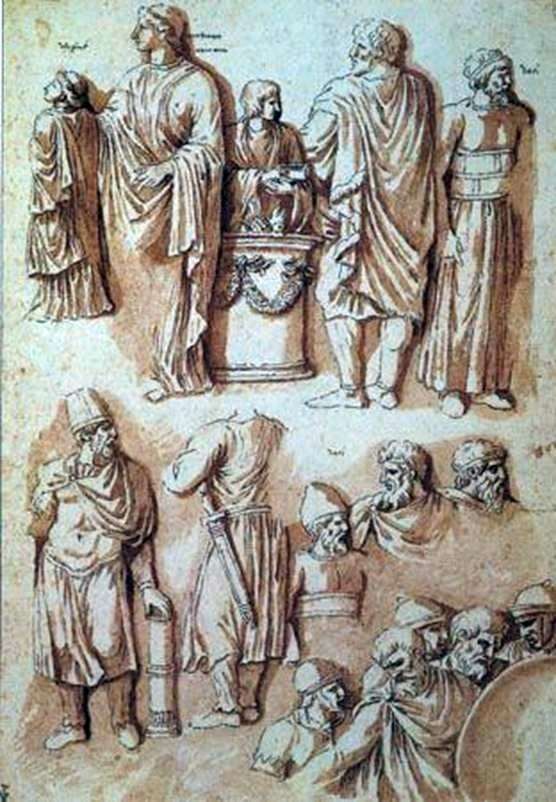
Already in his early works, Poussin often used landscape as an element of the background, but only in the 1640s did landscape become dominant in his works. In the “Landscape with a tree struck by lightning,” the 1651 artist depicts people in the foreground fleeing from the approaching thunderstorm. They look very tiny against the background of rocks and city walls. Nature here suppresses man, he is insignificant before the might of the raging elements. Small and insignificant people in the work “Landscape with a man who died from a snake bite.”
The personal tragedy of a person is lost in the idyllic landscape. Nature does not notice death. The sun still illuminates the road and the tops of trees, the surface of the reservoir is still quiet and serene. Landscapes Poussin is not always written from life. But, nevertheless, the artist quite often went to field sketches – sometimes with his friend Claude Lorrain, the unsurpassed master of the “classical” landscape. As for concept and formal harmony, the work of Poussin and Lorrain are similar. But they are very different manner of execution.
Poussin’s landscape style is tougher and stronger. While Lorrain is looking for new lighting or a mode of transmission of certain atmospheric phenomena, Poussin seeks geometric accuracy. But, despite the differences, both masters stand at the origins of the European classical landscape, which painters will imitate for two centuries.
 Apollo and the Muses (Parnassus) by Nicolas Poussin
Apollo and the Muses (Parnassus) by Nicolas Poussin Death of Germanicus by Nicolas Poussin
Death of Germanicus by Nicolas Poussin Dance in honor of Priapus by Nicolas Poussin
Dance in honor of Priapus by Nicolas Poussin Landscape with Polyphemus by Nicolas Poussin &;; &; nbsp
Landscape with Polyphemus by Nicolas Poussin &;; &; nbsp The figures from the column of Trajan by Nicolas Poussin
The figures from the column of Trajan by Nicolas Poussin Arcadian Shepherds by Nicolas Poussin
Arcadian Shepherds by Nicolas Poussin Apollo and Daphne by Nicolas Poussin
Apollo and Daphne by Nicolas Poussin Tancred and Herminia by Nicolas Poussin
Tancred and Herminia by Nicolas Poussin